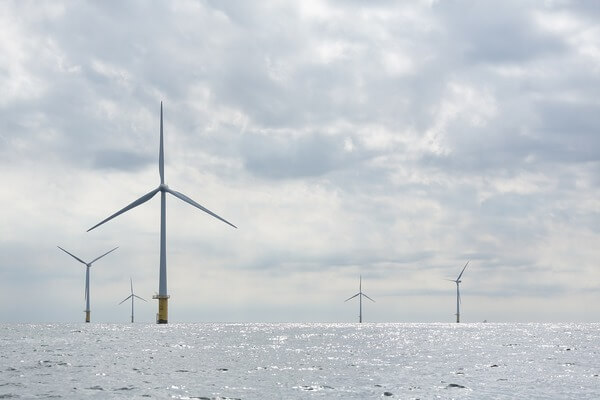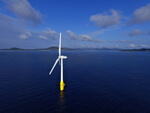News Release from windfair.net
Wind Industry Profile of
Task Force for Floating Offshore Wind Turbines Established
The idea is simple: the more floating offshore wind turbines are being built, the cheaper they become. That's why the Global Wind Energy Council (GWEC) has now formed a task force to drive this development forward.
Floating turbines can increase the output of the entire offshore wind industry tenfold, according to GWEC. This is done by opening the market to new locations were fixed-bottom turbines can't be installed, e.g. because of excessive water depth.
At the end of last year, only 65.7 MW of floating turbines were installed in the UK, Japan, Portugal, Norway and France. However, according to current forecasts by GWEC Market Intelligence, the current project pipeline shows that 6.2 GW of floating offshore wind turbines could probably be built by 2030, which could even increase to 19 GW, if costs will be reduced.
Offshore wind industry itself is setting an example here, as high costs were initially a big problem with the first bottom-fixed offshore wind farms, too. But the greater the experience and range of products, the lower the price.
Henrik Stiesdal, appointed chairman of the task force, explains the importance of floating turbines: “We are at a turning point for floating offshore wind, with rapid acceleration taking place in markets around the world. To ensure the success of the industry and achieve the cost reduction needed to ramp up deployment of the technology, we need to see coordination amongst the leading market players and share our experiences in the different pioneer markets emerging globally. This Task Force will be an important forum to facilitate this exchange and establish a common voice to provide best practices for the industry when entering new markets to expedite the immense growth potential of this important technology”.
And Stiesdal knows what he's talking about. As one of the pioneers of wind industry, the Dane was instrumental in designing the first turbines in the late 1970s, and then worked at Vestas and Siemens for many years. For some years now, he has been primarily involved in the construction of floating turbines.

The high costs of anchored offshore plants were once an initial obstacle (Image: Pixabay)
GWEC CEO Ben Backwell adds: “Offshore wind will be a key driver of the energy transition, with some industry stakeholders calling for over 1,400GW of offshore wind capacity installed by 2050. To reach this goal, expediting the development of floating offshore wind is crucial to deploy turbines in deeper waters and unlock up to ten times more offshore wind resource than is possible with fixed-bottom turbines alone. We are thrilled to have Henrik Stiesdal chairing this important Task Force as a pioneer of the floating offshore sector, and are confident that through his insights and the experience of the other Task Force members, we will be able to address the most urgent barriers for growth of the sector and spur a new era of offshore wind”.
Task Force members include leading stakeholders from the floating offshore wind sector: Equinor, GE Renewable Energy, Iberdrola, Ideol, the Japanese Wind Power Association, MHI Vestas, Ørsted, Principle Power, RenewableUK, Siemens Gamesa Renewable Energy, Shell, Stiesdal, wpd and the World Bank Group.
First item on the task force agenda is knowledge creation. The first step is to develop the most interesting markets. There are already many interested parties: in addition to the established offshore nations such as the UK or Germany, the focus is now also on markets such as Japan or the U.S., where the Californian coast is a potential region. But floating turbines could also be located in the Mediterranean or in areas further out in the North Sea. So there is a lot to do.
- Author:
- Windfair Editors
- Email:
- press@windfair.net
- Keywords:
- GWEC, task force, floating, floater, offshore, wind industry, cost reduction, potential, GW
























